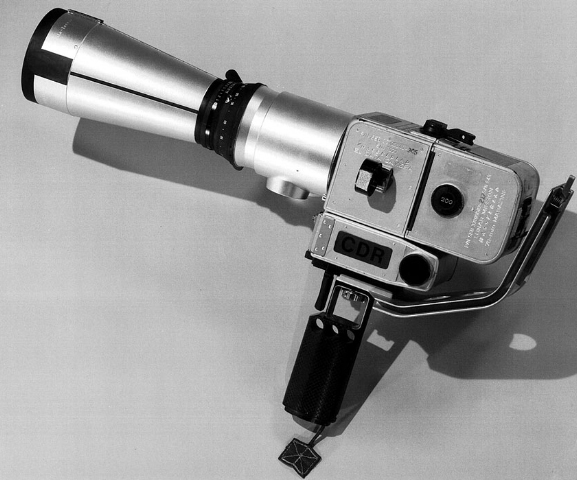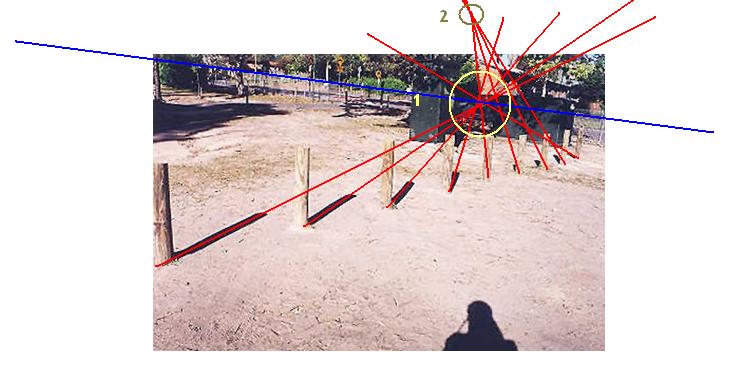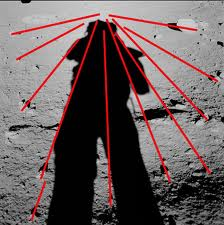It looks like you're using an Ad Blocker.
Please white-list or disable AboveTopSecret.com in your ad-blocking tool.
Thank you.
Some features of ATS will be disabled while you continue to use an ad-blocker.
share:
Originally posted by froglette
My thoughts on on the cameras.
They were big, bulky and very basic.
The cameras were mounted upon the chest of the astonauts.
For every single shot they needed to adjust the aperture.
There was no view finder on the camera.
They were not able to do rapid fire or automatic shots.
Personally, I would love to believe that we went to the moon. I would love to know that we have that ability. But, there is that annoying little voice inside me that says this isn't right.
Is it that we didn't go to the moon?
Is it that we went to the moon and the pictures didn't turn out so they recreated pictures?
There really is a reason that this subject hasn't gone away.
My thoughts on the cameras
Hasselblad some of the finest cameras you can buy , specially adapted for the Moon missions
Although mounted on chest plates guess what they could be removed
They did NOT need to adjust aperture for every single shot see pic below
Settings they had to use depending on the Sun's location.
You don't need a viewfinder it was impractical because of the helmet and any photographer can control how images look using depth of field. They did also practice here on Earth before they went and not all the pictures were good or exact exposure as claimed by the HS sites
They were rapid fire
Hasselblad EDC (Electric Data Camera) This is a specially designed version of the motorized 500EL intended for use on the surface of the moon, where the first lunar pictures were taken on 20 July 1969 by Neil Armstrong.
Hasselblad In Space
Link to details of the space cameras at the bottom of the page on the link above.
edit on 30-11-2012 by wmd_2008 because: (no reason
given)
The link is not connected WMD. "The page you requested wasn't found"
Originally posted by charlyv
Simply explain an alternate, plausible explanation as to how 800+ lbs of moon rocks got here, and you have a case for your moon hoax. Otherwise, you will always be on the wrong side of the fence, if you believe we have not walked on the moon.
It's that simple, and any other theory is trumped by that one fact.
No one has ever seen 800 pounds of moon rocks anywhere. The "moon rocks" presented to the scientists are "lunar" meteorites found on earth. Neither the Apollo "moon rocks" nor the "lunar" meteorites found on earth, are from the moon.
en.wikipedia.org...
reply to post by wmd_2008
I'm sorry if I implyed that the Hasselblad was a bad camera. That was not my intention. Basic as in it cannot adjust the aperture itself and no focus.


You are correct that they could be removed from the chest plate. But if you only have a set amount of time to do so much. It seems to me it would be very impractical to take most of the pictures with it removed.
I haven't found anything to say that the Hasselblad cameras that were used on the Apollo flights by the astronaut s had the ability to take rapid fire shots, such as one picture every 2-3 seconds. The film did need time to wind. At least that was my thought on that. If you could please post a link to that, I would appriciate it.
Thank you.
I'm sorry if I implyed that the Hasselblad was a bad camera. That was not my intention. Basic as in it cannot adjust the aperture itself and no focus.


You are correct that they could be removed from the chest plate. But if you only have a set amount of time to do so much. It seems to me it would be very impractical to take most of the pictures with it removed.
I haven't found anything to say that the Hasselblad cameras that were used on the Apollo flights by the astronaut s had the ability to take rapid fire shots, such as one picture every 2-3 seconds. The film did need time to wind. At least that was my thought on that. If you could please post a link to that, I would appriciate it.
Thank you.
edit on 30-11-2012 by froglette because: (no reason given)
I'm not a pro in optics and photography.
However...

I can say definitely that most shadows are directed towards the same point, which is normal. They are those meeting at the point in yellow circle that I labelled (1). Logically that point is close to the horizon (blue line) as it seems that the sun is fairly low on the horizon, in our back from this view perspective.
Until there, I would say nothing suspicious at all.
However, there are a few of those poles which shadow points to a second point labelled (2). As I'm no pro in optics and photos, I can't explain those. Any one willing to enlighten me?
I am, nonetheless, convinced that it is perfectly normal.
However...

I can say definitely that most shadows are directed towards the same point, which is normal. They are those meeting at the point in yellow circle that I labelled (1). Logically that point is close to the horizon (blue line) as it seems that the sun is fairly low on the horizon, in our back from this view perspective.
Until there, I would say nothing suspicious at all.
However, there are a few of those poles which shadow points to a second point labelled (2). As I'm no pro in optics and photos, I can't explain those. Any one willing to enlighten me?
I am, nonetheless, convinced that it is perfectly normal.
Originally posted by SpookyVince
I can say definitely that most shadows are directed towards the same point, which is normal. They are those meeting at the point in yellow circle that I labelled (1). Logically that point is close to the horizon (blue line) as it seems that the sun is fairly low on the horizon, in our back from this view perspective.
Where is the sun in this image ? to the left ? to the right ? or right behind the astronaut ?

Big image > www.hq.nasa.gov...
edit on 30-11-2012 by Ove38 because: lin fix
reply to post by Ove38
Right in your back. Nothing special there.
Get your camera on a shiny day. Find an open place. Photograph the ground 4 meters ahead of you. You will see exactly the same pattern in shadows.
Right in your back. Nothing special there.
Get your camera on a shiny day. Find an open place. Photograph the ground 4 meters ahead of you. You will see exactly the same pattern in shadows.
Originally posted by SpookyVince
reply to post by Ove38
Right in your back. Nothing special there.
Get your camera on a shiny day. Find an open place. Photograph the ground 4 meters ahead of you. You will see exactly the same pattern in shadows.
Could you show an example of that ?
Spookyvince
Well the sun is not at the horizon. Without going into trigonometry I'd estimate about 30 degrees off the horizon line. Your horizon line is too low and at the wrong angle. It should be at eye level. And the shadows would not meet below the horizon line. They'd need to meet above the horizon line otherwise you'd end up with this.
img.abovetopsecret.com...
.
Well the sun is not at the horizon. Without going into trigonometry I'd estimate about 30 degrees off the horizon line. Your horizon line is too low and at the wrong angle. It should be at eye level. And the shadows would not meet below the horizon line. They'd need to meet above the horizon line otherwise you'd end up with this.
img.abovetopsecret.com...
.
reply to post by MortPenguin
Yeah well, I've not given it a lot of time, and yes the horizon may seem a bit odd but that's what it looked like to me. I could reconsider.
Now, why this second "focal" point? (if that's what it should be called?)
Because, I admit it looks strange, counterintuitive as you put it in your image, but yet it is normal.
Yeah well, I've not given it a lot of time, and yes the horizon may seem a bit odd but that's what it looked like to me. I could reconsider.
Now, why this second "focal" point? (if that's what it should be called?)
Because, I admit it looks strange, counterintuitive as you put it in your image, but yet it is normal.
Originally posted by PsykoOps
Google "shadows". How bout a thousand examples?
I knew you couldn't find that
if the sun was the only light source, the light couldn't have been coming from the east, west and south, from three directions at the same time.

edit on 30-11-2012 by Ove38 because: text fix
In this picture look at the angle differences between the first and last poles. They are dramatically different.
img.abovetopsecret.com...
Now look at mine and both angles appear about 45 degrees. They would look roughly parallel from above.
img.abovetopsecret.com...
That is perspective.
img.abovetopsecret.com...
Now look at mine and both angles appear about 45 degrees. They would look roughly parallel from above.
img.abovetopsecret.com...
That is perspective.
reply to post by froglette
You got a link on the previous post Hasselblad In Space
Have you heard of depth of field Do you know how it works You can buy cheap disposable cameras were you have NO adjustment how do you think they work. Have you heard of the Sunny 16 rule.
Google them
Any descent amatuer photographer on a sunny day could take a camera with a wide angle lens set it to a a pre focus distance using the depth of field marks on the lens to control what would look sharp in the picture.
The same for exposure using the sunny 16 rule guess what light source on the Moon and the Earth is the same.
Here is a good link on depth of field scroll down page and look at pictures of the lens used to explain how it works.
www.panoguide.com...
Oh by the way this is the camera and lens combination used most on the Moon not what you showed!!!
You got a link on the previous post Hasselblad In Space
Have you heard of depth of field Do you know how it works You can buy cheap disposable cameras were you have NO adjustment how do you think they work. Have you heard of the Sunny 16 rule.
Google them
Any descent amatuer photographer on a sunny day could take a camera with a wide angle lens set it to a a pre focus distance using the depth of field marks on the lens to control what would look sharp in the picture.
The same for exposure using the sunny 16 rule guess what light source on the Moon and the Earth is the same.
Here is a good link on depth of field scroll down page and look at pictures of the lens used to explain how it works.
www.panoguide.com...
Oh by the way this is the camera and lens combination used most on the Moon not what you showed!!!
edit on 30-11-2012 by wmd_2008 because: (no reason
given)
reply to post by Ove38
It is really simple, if there is more than one light source each object should have more than one shadow.
www.abovetopsecret.com...
It is really simple, if there is more than one light source each object should have more than one shadow.
www.abovetopsecret.com...
Originally posted by MortPenguin
In this picture look at the angle differences between the first and last poles. They are dramatically different.
...
That is perspective.
I'm really not sure why you think there is something untoward going on here. I performed a trivial experiment to show you just how much shadows can appear to converge through a lens.
Here is a scene rendered with identical cylindrical posts being illuminated by parallel rays (with some soft shadowing for effect) on a flat plane:

As you can see, the shadows dramatically converge even when using a normal (35mm) rectilinear lens.
Here's the same scene from above with an orthographic lens (ie no perspective distortion).

As you can see, all shadow lines are 100% parallel, but despite this they appear to converge dramatically when viewed in perspective.
Could you please explain why the photograph can't have been taken this way when I can trivially recreate the scene in a 3d model?
Originally posted by seabhac-rua
reply to post by Ove38
It is really simple, if there is more than one light source each object should have more than one shadow.
www.abovetopsecret.com...
To back you up. Here's the posts I just rendered, except illuminated with two suns:

Two suns = two shadows, pretty intuitive!
Expotent since you can do this kind of stuff how bout do one that shows the grounds effect on the shadow. Moon pictures are not taken on level ground.
Like the one pic ove posted it was taken of a small crater. The shadows of course follow the grounds shape. That seems to be one factor some people
have hard time understanding.
Originally posted by PsykoOps
Expotent since you can do this kind of stuff how bout do one that shows the grounds effect on the shadow. Moon pictures are not taken on level ground. Like the one pic ove posted it was taken of a small crater. The shadows of course follow the grounds shape. That seems to be one factor some people have hard time understanding.
Certainly, what would you like to see? I can render any geometry so would you just like something that makes it clear that terrain badly affects shadows?
By the way. I spent another few minutes doing a more close photo match for the original. Here we have practically identical shadow behaviour, an approximate 30 degree offset from the post line, the 5th post is inline with the sun direction, and the shadows generally look pretty much identical:

new topics
-
SETI chief says US has no evidence for alien technology. 'And we never have'
Aliens and UFOs: 47 minutes ago -
This is our Story
General Entertainment: 3 hours ago -
President BIDEN Vows to Make Americans Pay More Federal Taxes in 2025 - Political Suicide.
2024 Elections: 5 hours ago -
Ode to Artemis
General Chit Chat: 6 hours ago -
Ditching physical money
History: 9 hours ago -
One Flame Throwing Robot Dog for Christmas Please!
Weaponry: 10 hours ago -
Don't take advantage of people just because it seems easy it will backfire
Rant: 10 hours ago -
VirginOfGrand says hello
Introductions: 11 hours ago -
Should Biden Replace Harris With AOC On the 2024 Democrat Ticket?
2024 Elections: 11 hours ago
top topics
-
University student disciplined after saying veganism is wrong and gender fluidity is stupid
Education and Media: 14 hours ago, 14 flags -
Police clash with St George’s Day protesters at central London rally
Social Issues and Civil Unrest: 17 hours ago, 10 flags -
President BIDEN Vows to Make Americans Pay More Federal Taxes in 2025 - Political Suicide.
2024 Elections: 5 hours ago, 10 flags -
Should Biden Replace Harris With AOC On the 2024 Democrat Ticket?
2024 Elections: 11 hours ago, 6 flags -
One Flame Throwing Robot Dog for Christmas Please!
Weaponry: 10 hours ago, 6 flags -
Ditching physical money
History: 9 hours ago, 4 flags -
Don't take advantage of people just because it seems easy it will backfire
Rant: 10 hours ago, 4 flags -
God lived as a Devil Dog.
Short Stories: 15 hours ago, 3 flags -
VirginOfGrand says hello
Introductions: 11 hours ago, 2 flags -
Geddy Lee in Conversation with Alex Lifeson - My Effin’ Life
People: 15 hours ago, 2 flags
active topics
-
SETI chief says US has no evidence for alien technology. 'And we never have'
Aliens and UFOs • 4 • : Consvoli -
"We're All Hamas" Heard at Columbia University Protests
Social Issues and Civil Unrest • 264 • : HopeForTheFuture -
University student disciplined after saying veganism is wrong and gender fluidity is stupid
Education and Media • 30 • : KrustyKrab -
Republican Voters Against Trump
2024 Elections • 288 • : burritocat -
Police clash with St George’s Day protesters at central London rally
Social Issues and Civil Unrest • 38 • : ohahhupthera -
Spectrophilia - Women Who Have Had Affairs With Ghosts Say Spooks Are Better Lovers Than Real Men
Paranormal Studies • 29 • : burritocat -
Should Biden Replace Harris With AOC On the 2024 Democrat Ticket?
2024 Elections • 45 • : burritocat -
Ditching physical money
History • 14 • : DerBeobachter2 -
British TV Presenter Refuses To Use Guest's Preferred Pronouns
Education and Media • 129 • : KrustyKrab -
-@TH3WH17ERABB17- -Q- ---TIME TO SHOW THE WORLD--- -Part- --44--
Dissecting Disinformation • 637 • : burritocat
